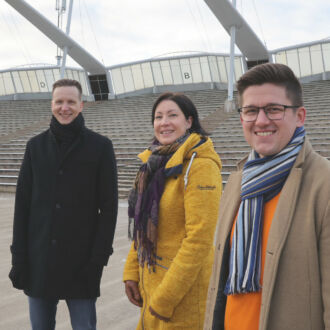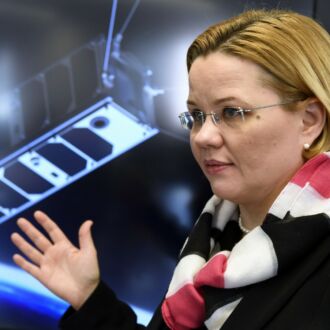Finland, long a leader in recycling bottles and paper, now ambitiously aims to minimise the quantities of household waste sent to landfill sites.
For Finnish households, sorting, returning and recycling waste has long been a matter of everyday routine. “Finns are very aware and concerned about environmental problems,” says Sirje Stén, a waste specialist from the Ministry of the Environment. “Separating and recycling waste material is an easy practical way you can do something yourself to benefit the environment.”
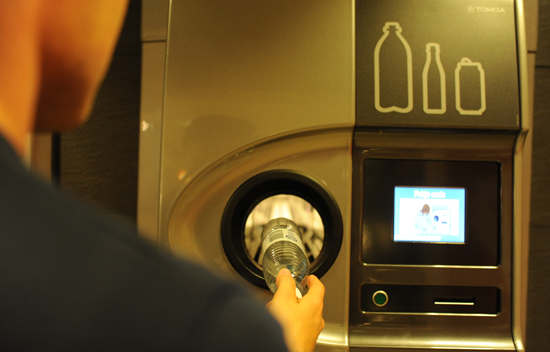
Beverage container recycling programmes work well because of a monetary deposit system. Recovery rates are near 100 percent. Photo: Emilia Kangasluoma
Finnish recycling figures are particularly praiseworthy when it comes to returnable bottles and cans within the nationwide deposit scheme. The return rate for refillable glass bottles is almost 100 percent. For recyclable aluminium beverage cans and plastic bottles, recovery rates are 96 percent and 94 percent. Finland also leads the way on paper recycling with a recycling rate of 93 percent in 2011, which is very high by European standards. This is largely because Finland has a well-established paper industry able to use the recovered paper. Used paper has been collected in Finland for almost a century, while in many other countries this is still a new green idea.
Handy collection points
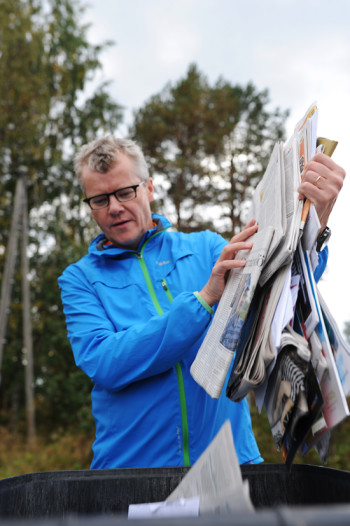
Paper recycling has a long history in Finland, where the large paper industry is able to re-use the material. Photo: Emilia Kangasluoma
“Our infrastructure for recycling household wastes is generally good, especially in towns and cities,” explains Stén. Apartment blocks and housing cooperatives have their own handy shared collection points for paper, organic waste and, increasingly, cardboard and cartons, making recycling easy. Supermarkets and shopping centres also have collection points for metals and glass. Used batteries and lamps can be returned to shops that sell those products, and the same will soon be true for all used electronic devices. Finnish homes generate about 340 kilos of household waste per person per year. About a third of this is compostable organic waste; nearly one-fifth is paper; plastics make up another fifth, and the rest mainly consists of textiles and packaging materials including glass, cartons and metals. Finland’s National Waste Plan aims to ensure that more than half of the material content of household waste is recycled by 2016. “Our target is achievable, though challenging,” says Stén. “In 2011 the figure was about 35 percent, but we want Finnish households to sort their waste even more effectively.” This recovered material content includes glass, paper, cardboard, cartons and metals, as well as organic waste, which is centrally composted for use in public parks and green spaces.
Drastic solutions for plastic
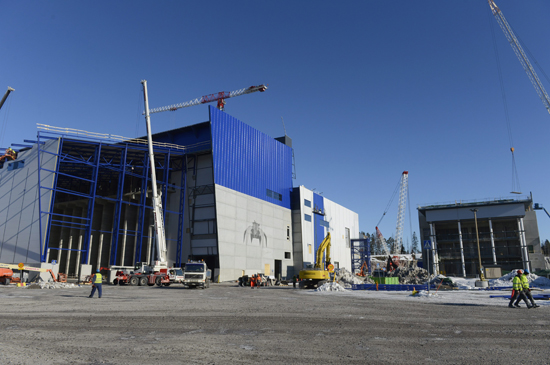
Shown here during construction and commencing operations in 2014, this incineration and power plant in Vantaa, north of Helsinki, can recover energy as waste is destroyed. Photo: Martti Kainulainen/Lehtikuva
Like many other countries, Finland is struggling to find ways to recycle problematic plastic wastes. Finnish shoppers have long had to pay for their plastic carrier bags, which are widely reused. “But the problem is there are so many other kinds of plastic packaging with different recycling properties,” says Stén. “We can’t expect householders to become plastic sorting experts, but there is scope for improving the recovery of reusable hard plastics.” The national plan envisages that after recovering all usable materials, the maximum possible amount of the remaining waste will be used to generate energy. This includes most plastics. “By 2016 we should have seven energy recovery plants around Finland where waste will be incinerated,” says Stén. “Here in Finland, by using combined heat and power technologies, we can maximise the amounts of energy obtained from waste for district heating systems as well as electricity. “Our municipal waste management companies reckon that with the help of these energy recovery plants by 2016 we could reduce the proportion of household waste ending up in landfill sites to perhaps as little as 5 percent, which would represent great progress.”
By Fran Weaver, November 2013


